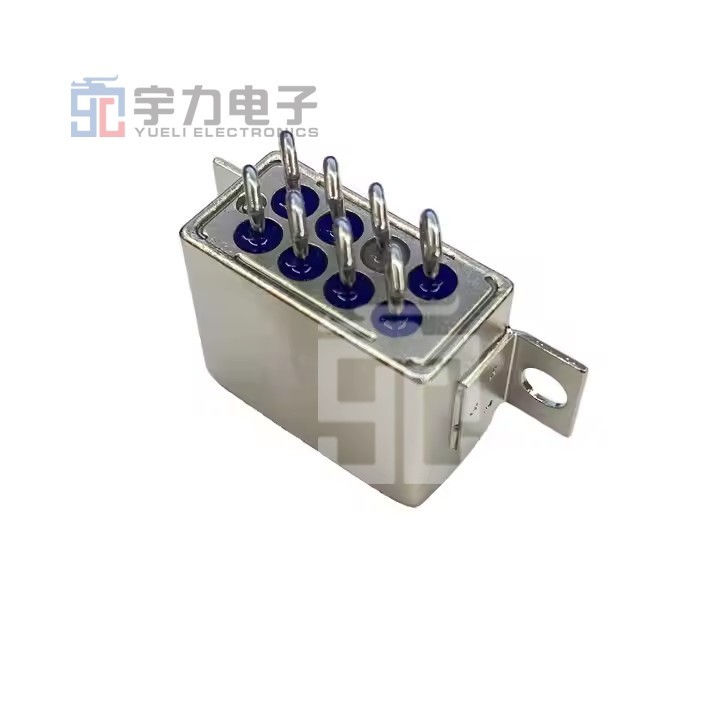Understanding Signal Relays: The Backbone of Electronic Communication
2025-07-15

Signal relays are electromechanical devices that allow electrical circuits to be controlled by a low-power signal, enabling the opening or closing of a circuit. These components are essential in various applications where remote control and automation are necessary, acting as a bridge allowing one circuit to control another while maintaining electrical isolation.
The primary function of a signal relay is to use an electromagnetic coil to operate a switch. When current flows through the coil, it generates a magnetic field that activates the switch, either connecting or disconnecting the circuit. This mechanism allows for the safe and efficient management of high-voltage or high-current circuits using low-power control signals, which is particularly crucial in industrial and automotive applications.
Signal relays come in various types, including electromagnetic, solid-state, and reed relays. Electromagnetic relays are the most common, featuring a physical switch mechanism and are suitable for a wide range of applications. Solid-state relays, on the other hand, utilize semiconductor devices for switching, offering faster response times and higher durability since they have no moving parts. Reed relays, which consist of two ferromagnetic reeds sealed in a glass envelope, are ideal for low-power applications due to their compact size and reliability.
One of the most significant benefits of using signal relays is their ability to isolate different parts of a system, protecting sensitive components from high voltages and currents. This isolation is crucial in delicate systems, such as medical devices and instrumentation, where signal integrity and safety are paramount. Moreover, signal relays can handle multiple circuits, enabling complex control systems without requiring extensive wiring.
In terms of applications, signal relays are widely used in telecommunications, automotive electronics, home automation systems, and industrial control panels. For instance, in telecommunications, they help manage signal routing, while in automotive systems, they are employed for controlling lighting, safety features, and engine management systems.
In conclusion, signal relays are indispensable components in the electronics industry, facilitating efficient circuit management and enhancing the safety and reliability of various applications. Understanding the mechanisms, types, and applications of signal relays is essential for professionals seeking to optimize their designs and ensure seamless operation within their electronic systems. By leveraging the capabilities of signal relays, engineers and designers can create robust solutions tailored to meet the demands of an ever-evolving technological landscape.
The primary function of a signal relay is to use an electromagnetic coil to operate a switch. When current flows through the coil, it generates a magnetic field that activates the switch, either connecting or disconnecting the circuit. This mechanism allows for the safe and efficient management of high-voltage or high-current circuits using low-power control signals, which is particularly crucial in industrial and automotive applications.
Signal relays come in various types, including electromagnetic, solid-state, and reed relays. Electromagnetic relays are the most common, featuring a physical switch mechanism and are suitable for a wide range of applications. Solid-state relays, on the other hand, utilize semiconductor devices for switching, offering faster response times and higher durability since they have no moving parts. Reed relays, which consist of two ferromagnetic reeds sealed in a glass envelope, are ideal for low-power applications due to their compact size and reliability.
One of the most significant benefits of using signal relays is their ability to isolate different parts of a system, protecting sensitive components from high voltages and currents. This isolation is crucial in delicate systems, such as medical devices and instrumentation, where signal integrity and safety are paramount. Moreover, signal relays can handle multiple circuits, enabling complex control systems without requiring extensive wiring.
In terms of applications, signal relays are widely used in telecommunications, automotive electronics, home automation systems, and industrial control panels. For instance, in telecommunications, they help manage signal routing, while in automotive systems, they are employed for controlling lighting, safety features, and engine management systems.
In conclusion, signal relays are indispensable components in the electronics industry, facilitating efficient circuit management and enhancing the safety and reliability of various applications. Understanding the mechanisms, types, and applications of signal relays is essential for professionals seeking to optimize their designs and ensure seamless operation within their electronic systems. By leveraging the capabilities of signal relays, engineers and designers can create robust solutions tailored to meet the demands of an ever-evolving technological landscape.


